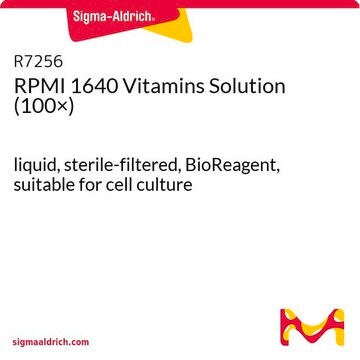M3817
MegaCell™ RPMI-1640 Medium
without L-glutamine, liquid, sterile-filtered, suitable for cell culture
About This Item
Recommended Products
sterility
sterile-filtered
form
liquid
technique(s)
cell culture | mammalian: suitable
impurities
endotoxin, tested
components
L-glutamine: no
shipped in
ambient
storage temp.
2-8°C
General description
Application
- as a component of the TSC medium for culturing trophoblast stem cells (TSC)[1]
- as a component of 25 ng/ml FGF4 and 1 g/ml heparin (TSF4H medium) for culturing TSCs[2]
- as a component of embryo-like structures (ETS) embryo medium and TS cell medium for culturing embryonic stem cells (ESCs) and TSCs[3]
Reconstitution
Legal Information
also commonly purchased with this product
Storage Class
10 - Combustible liquids
wgk_germany
WGK 3
flash_point_f
Not applicable
flash_point_c
Not applicable
Choose from one of the most recent versions:
Certificates of Analysis (COA)
Don't see the Right Version?
If you require a particular version, you can look up a specific certificate by the Lot or Batch number.
Already Own This Product?
Find documentation for the products that you have recently purchased in the Document Library.
Customers Also Viewed
Our team of scientists has experience in all areas of research including Life Science, Material Science, Chemical Synthesis, Chromatography, Analytical and many others.
Contact Technical Service






